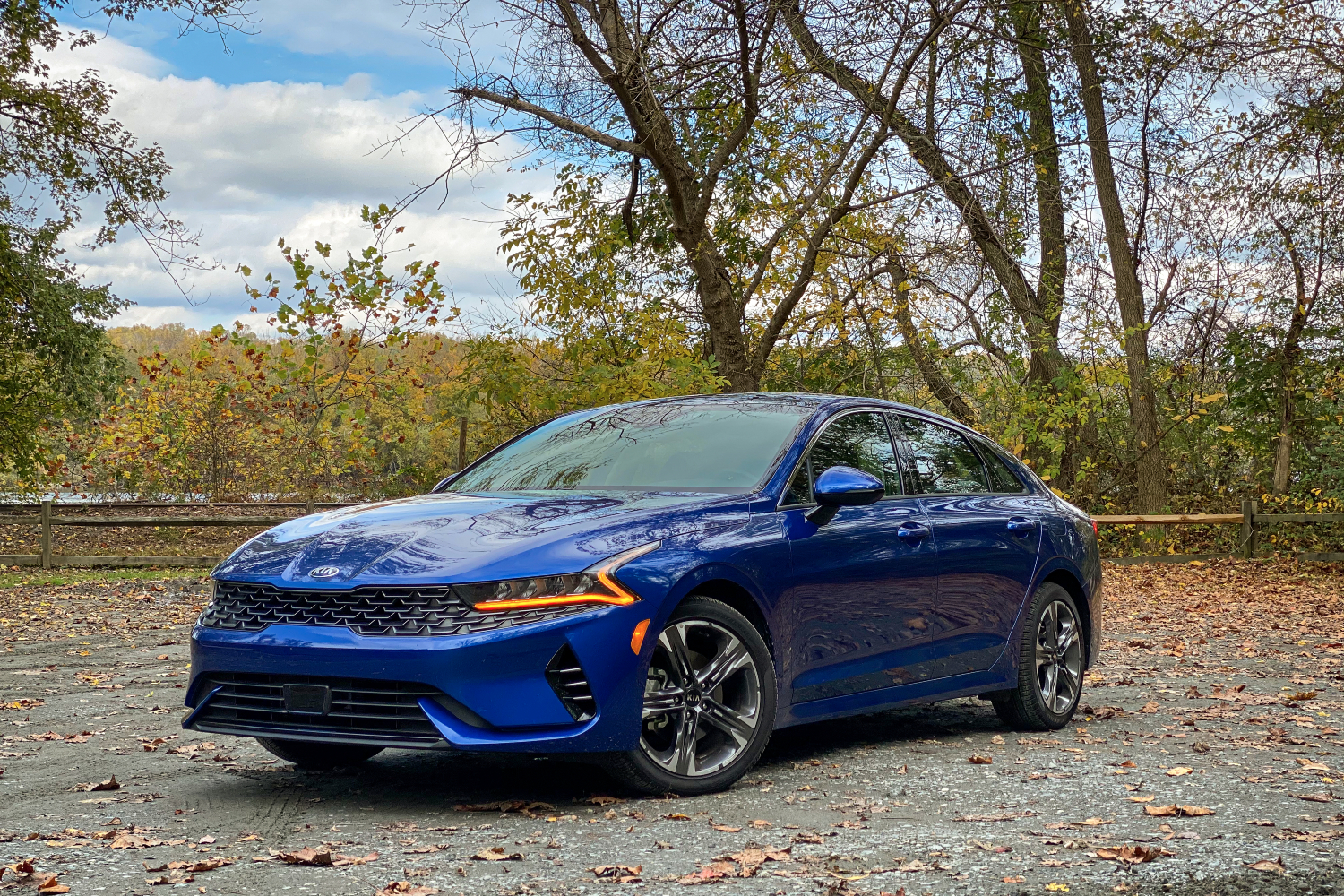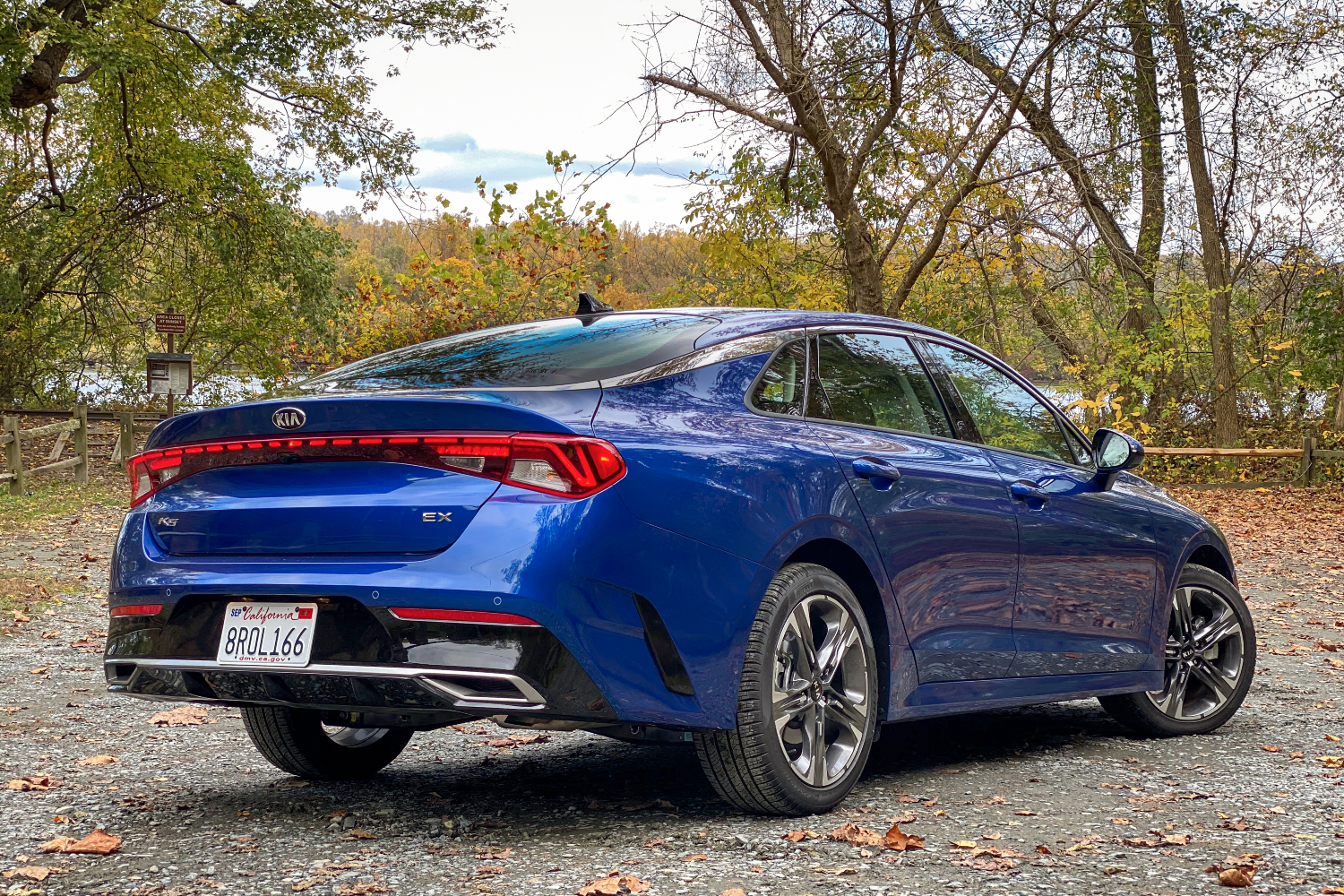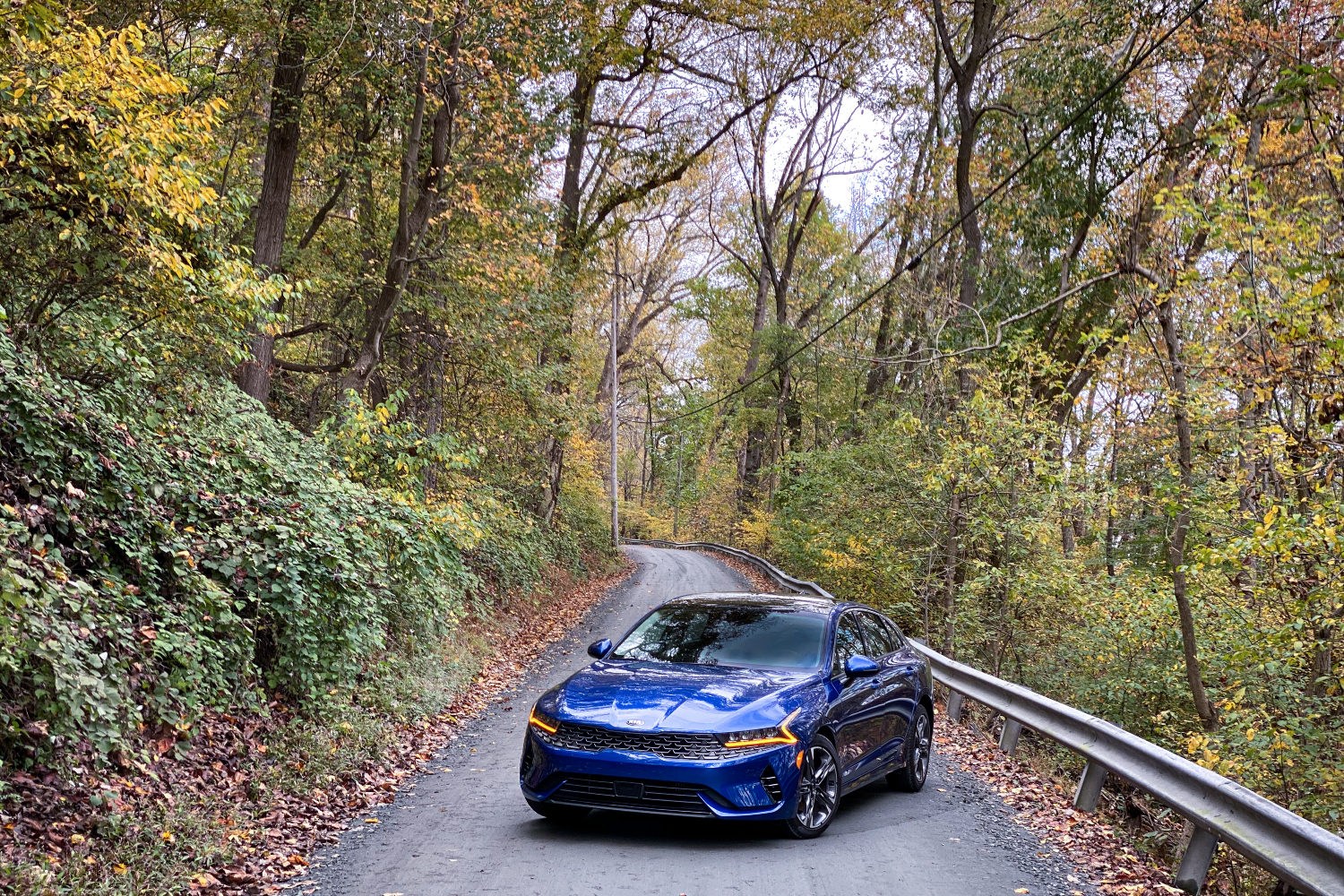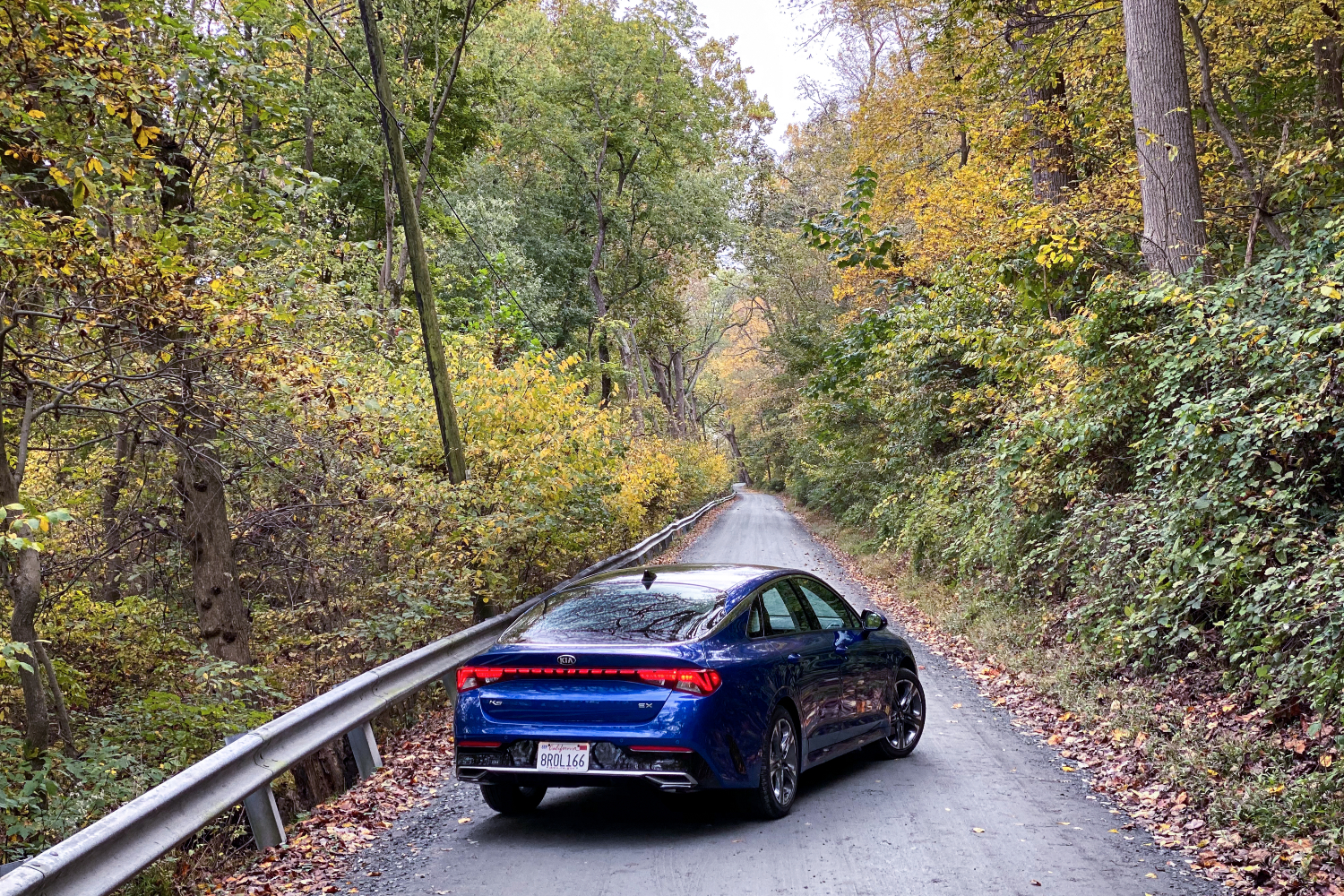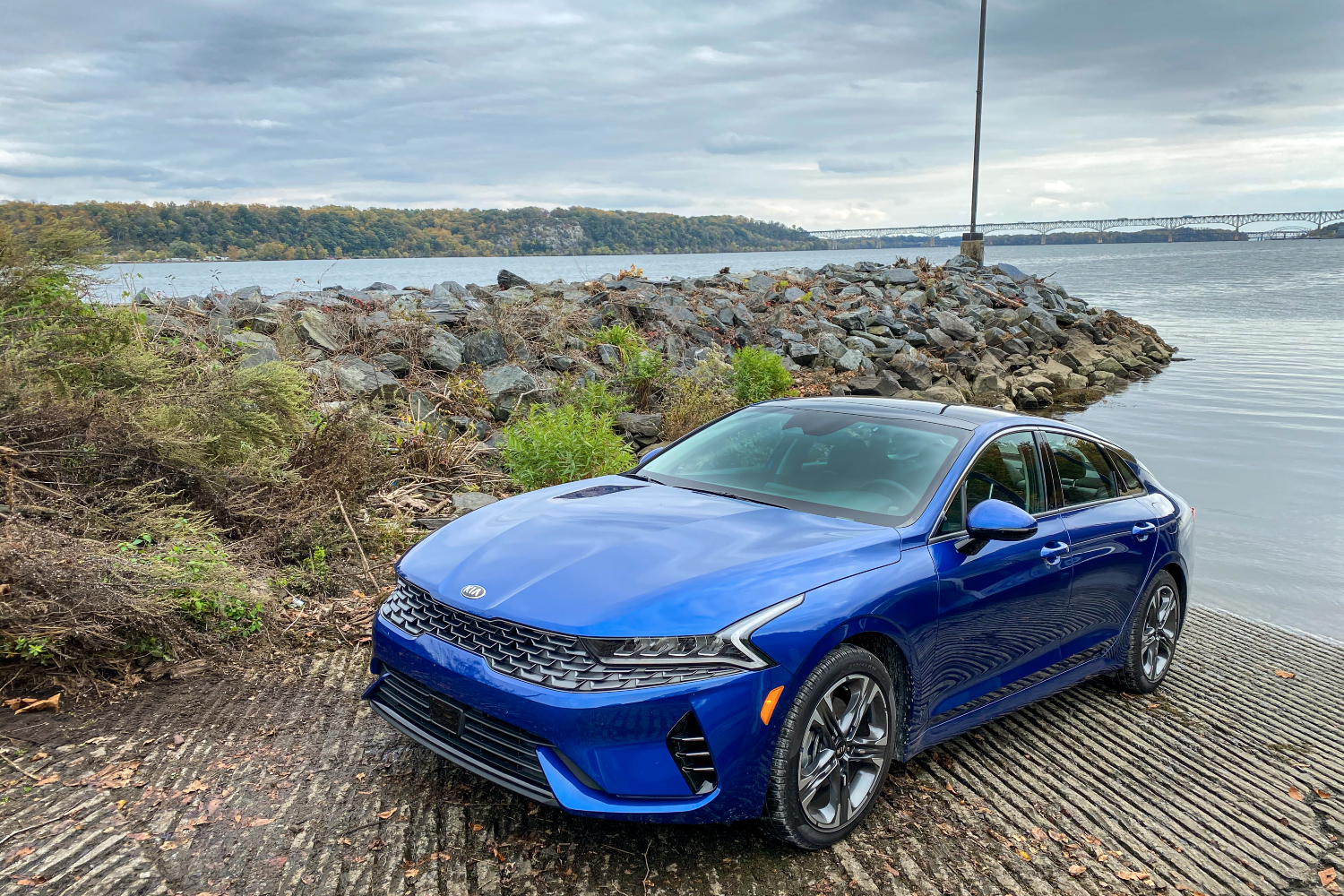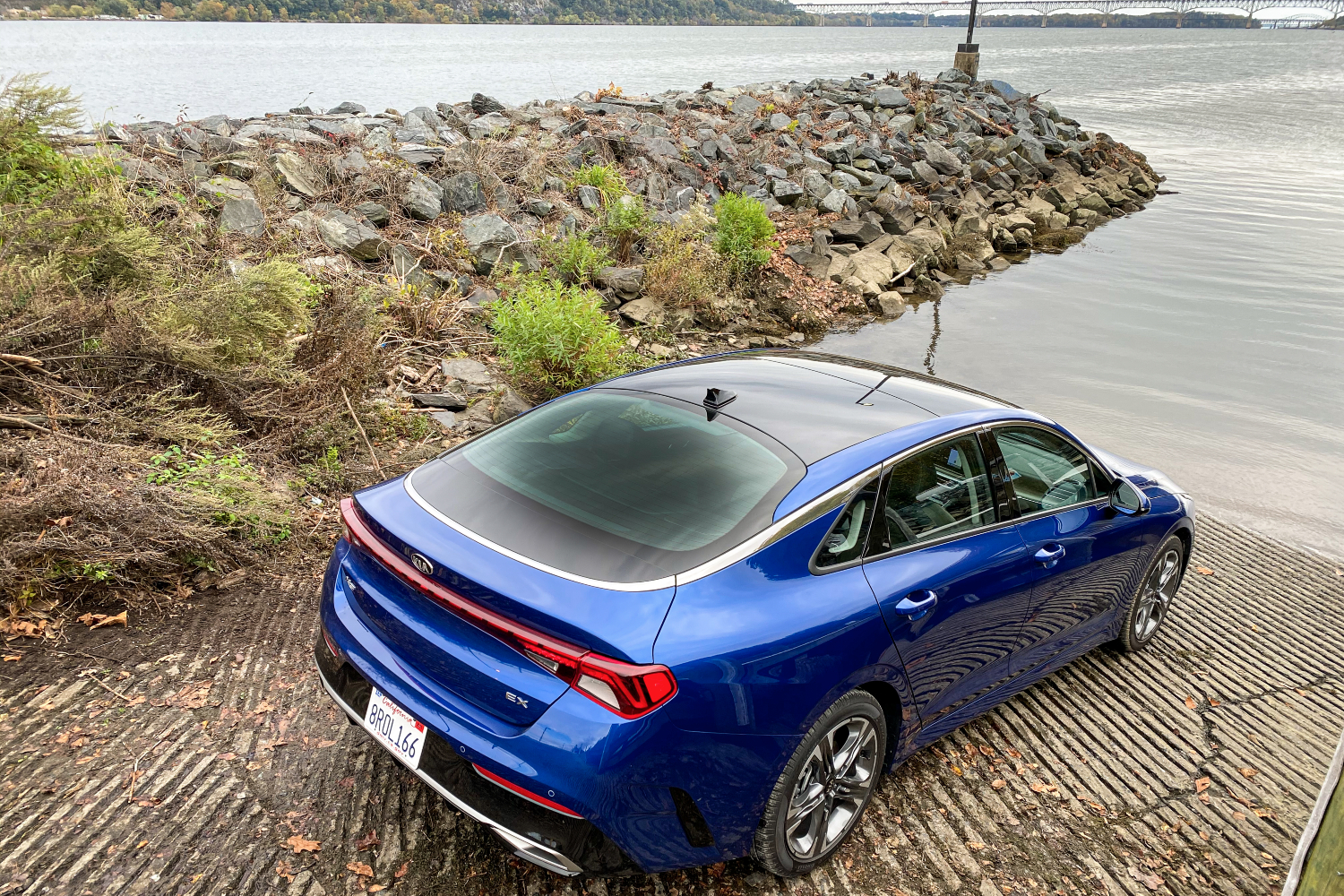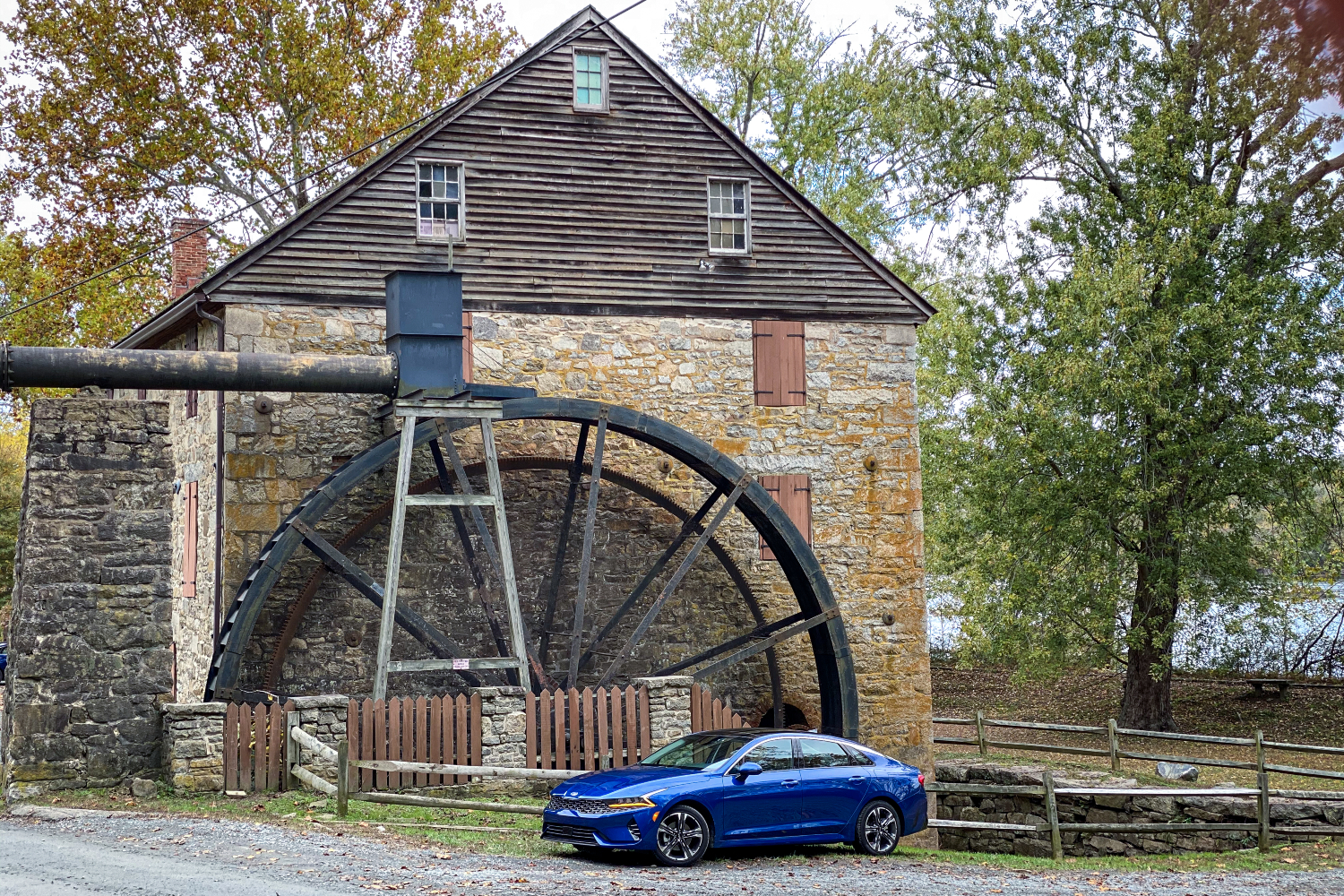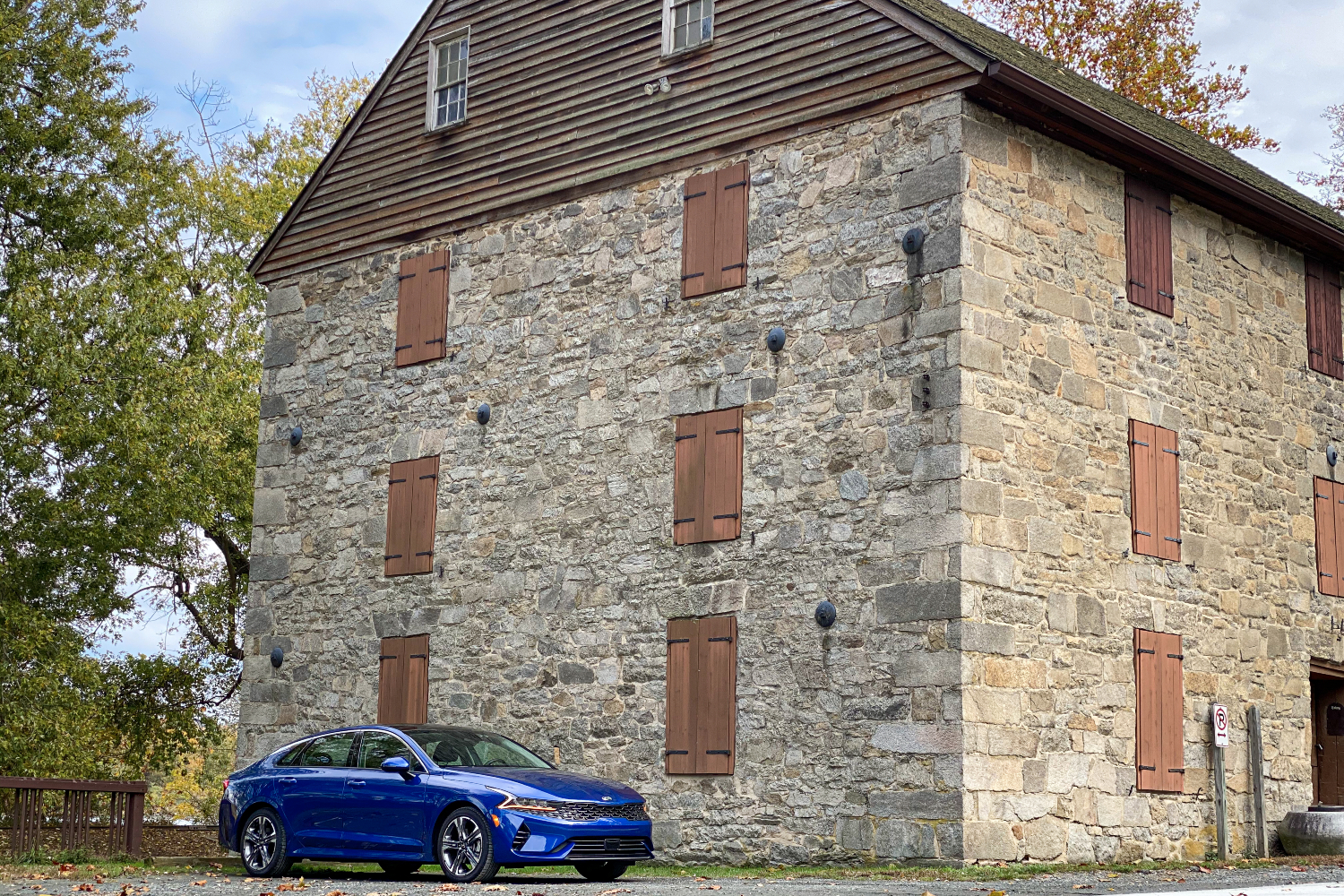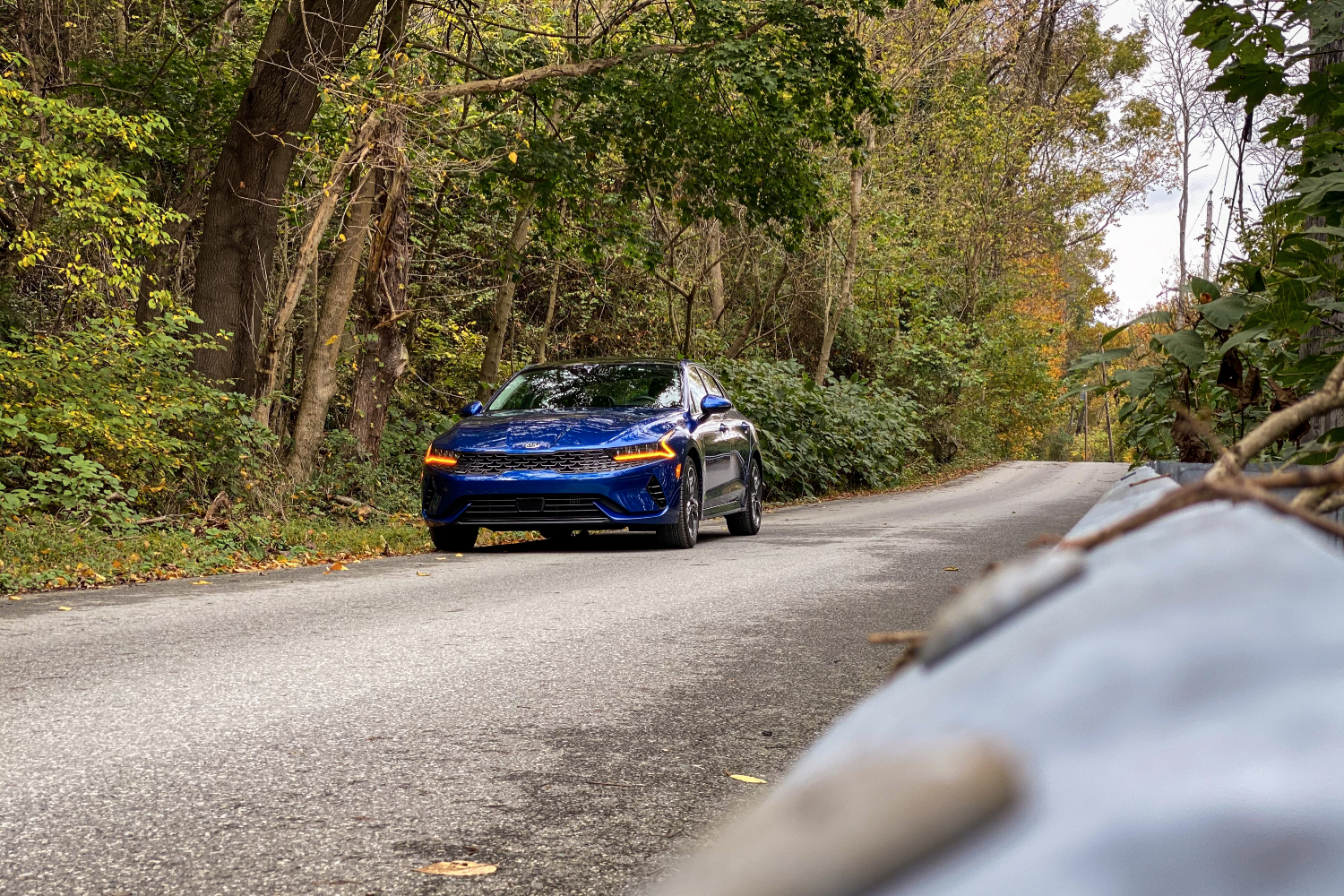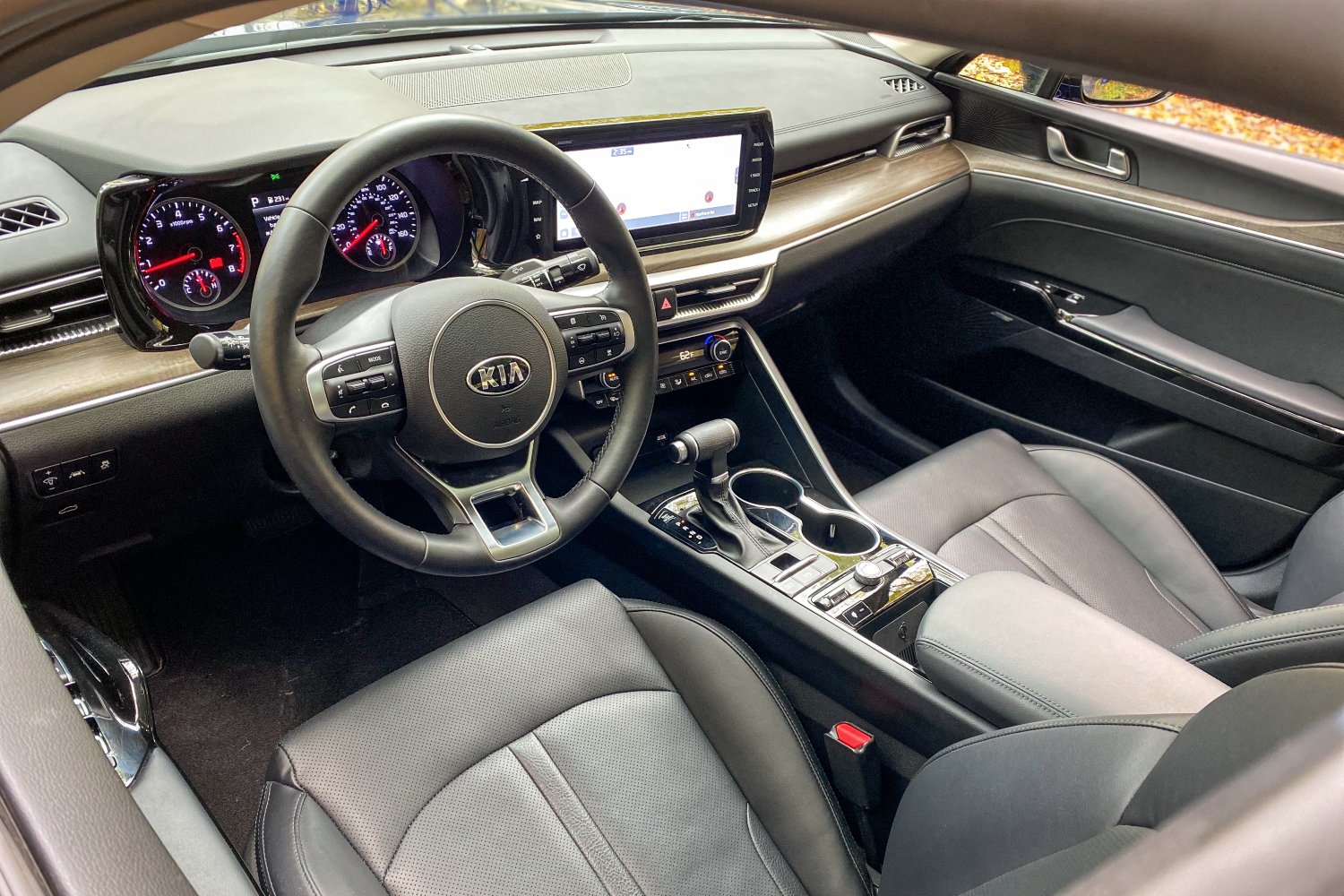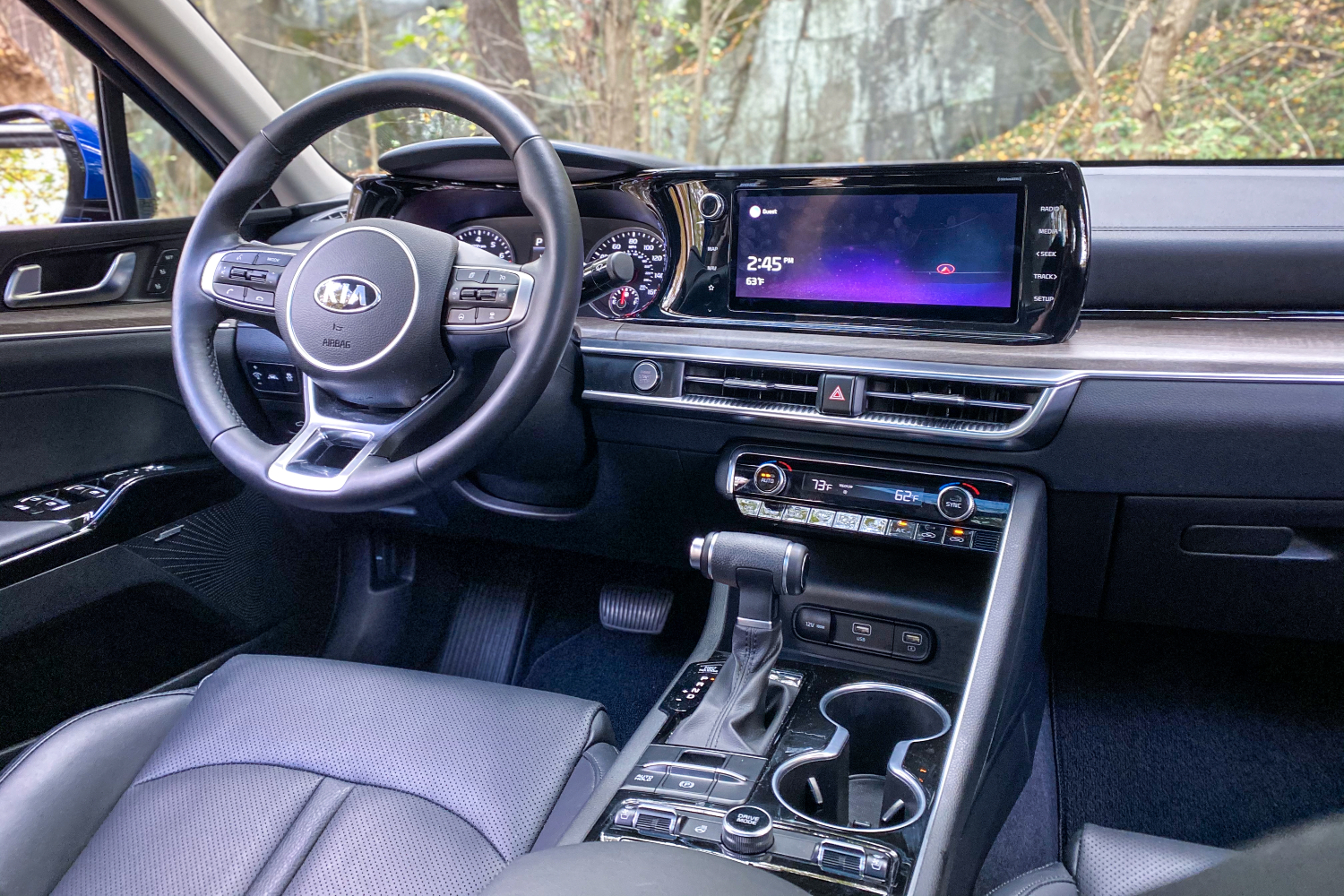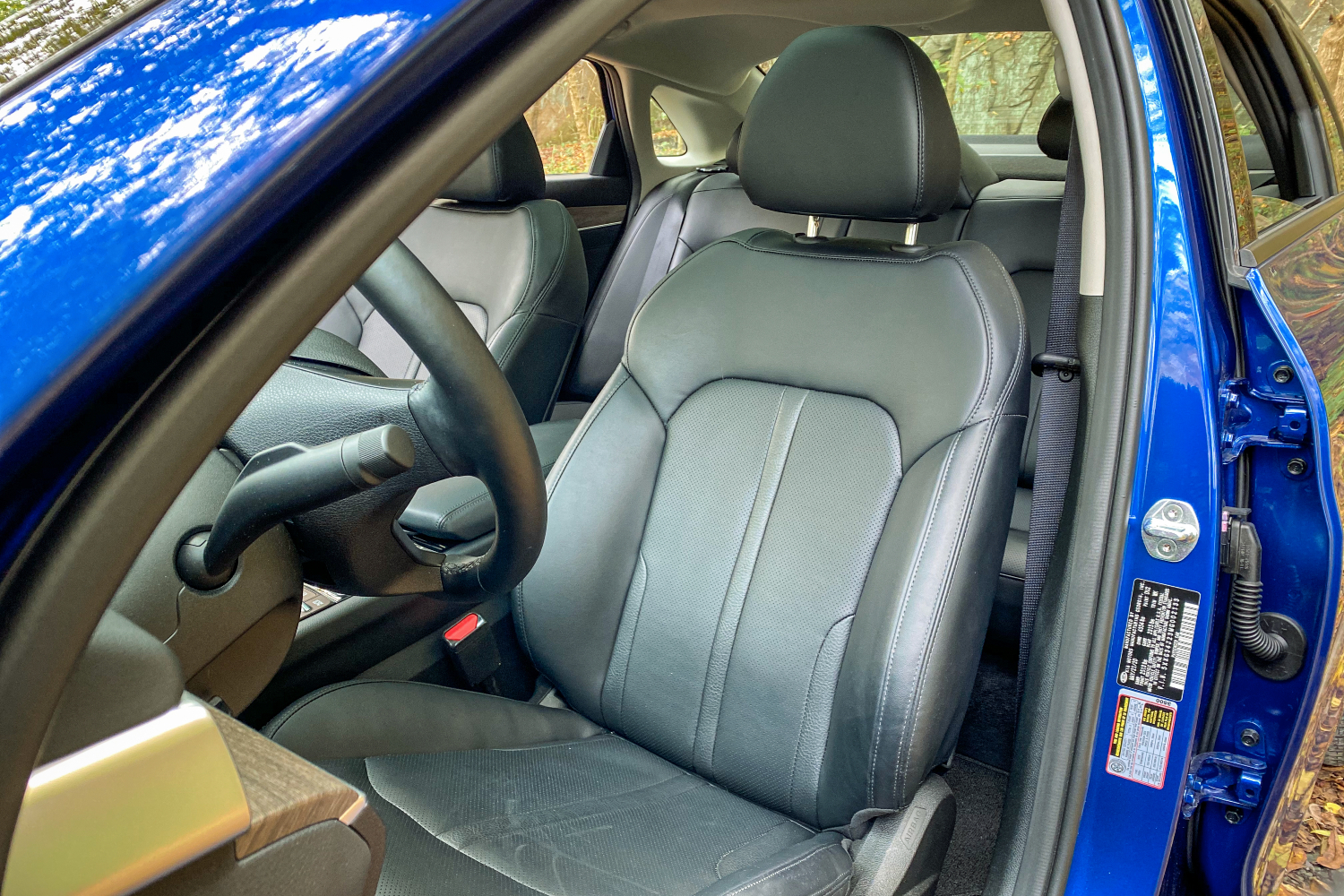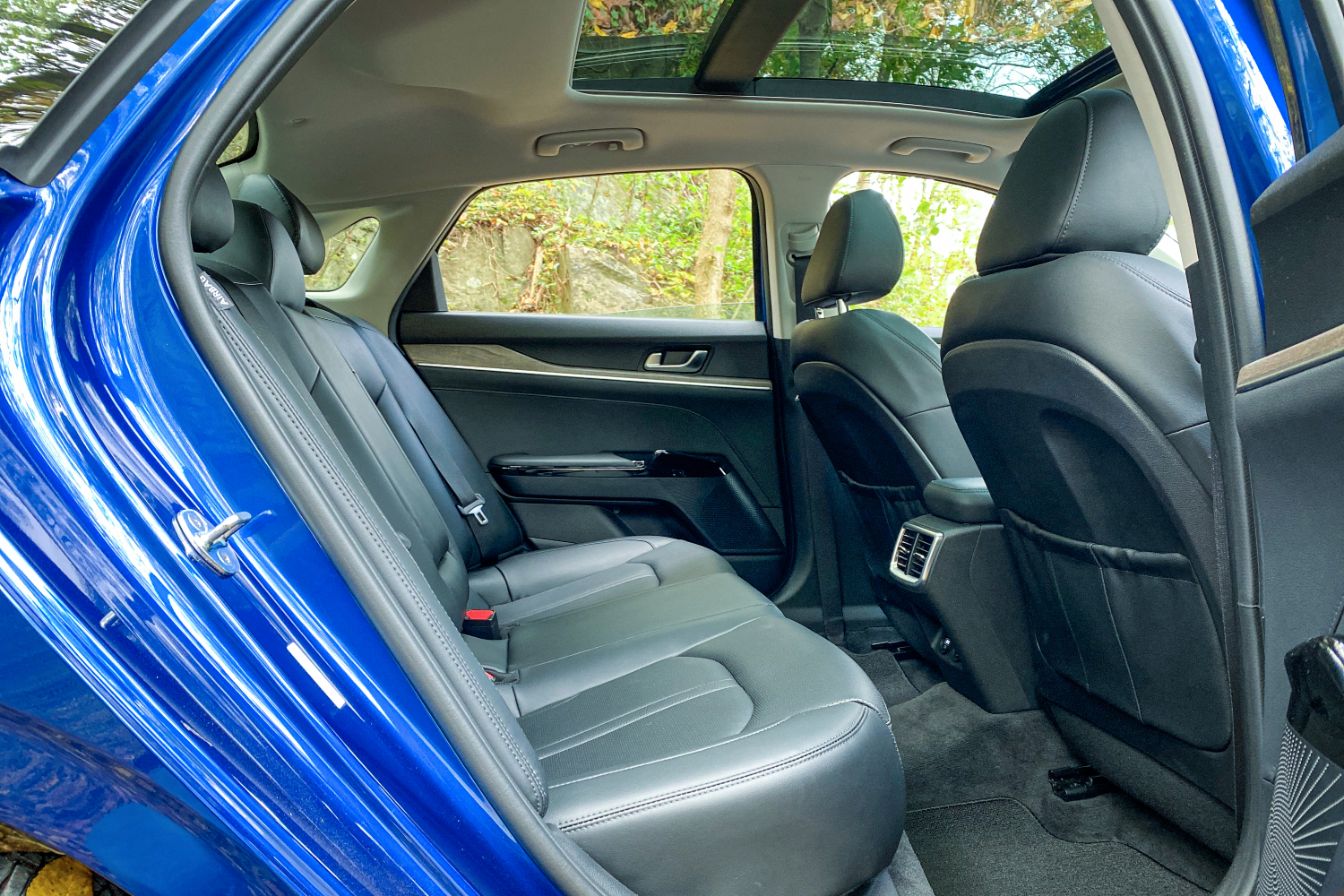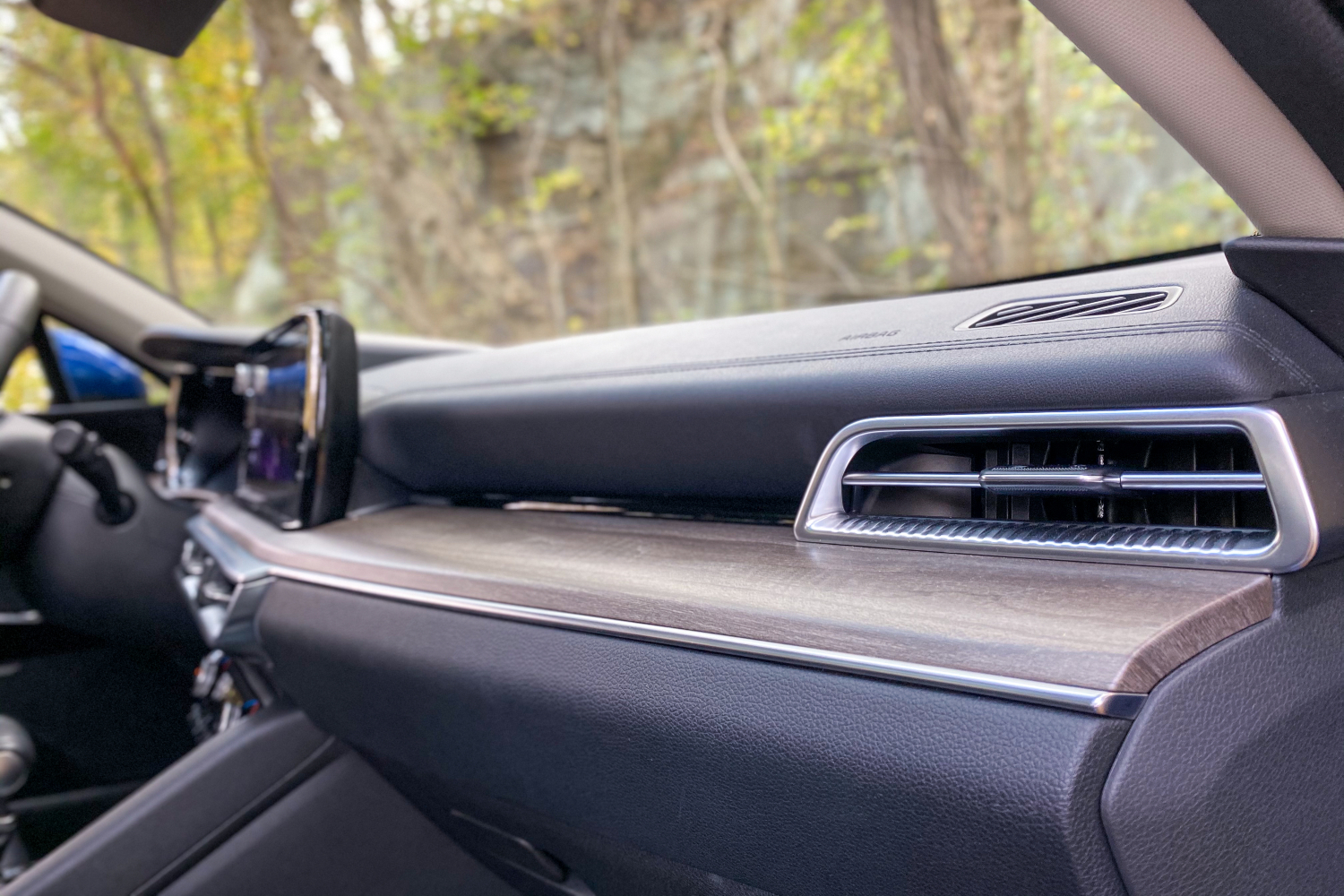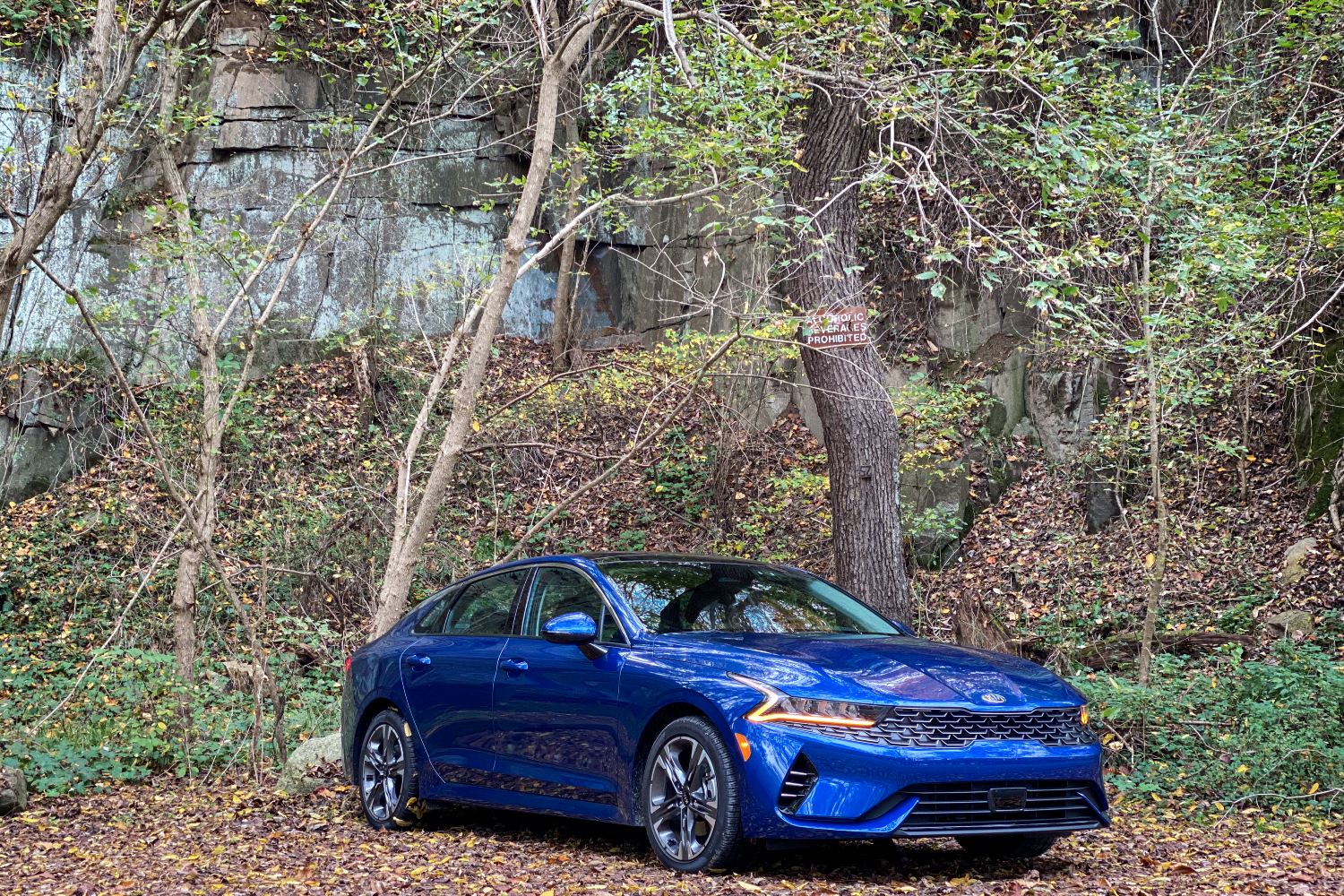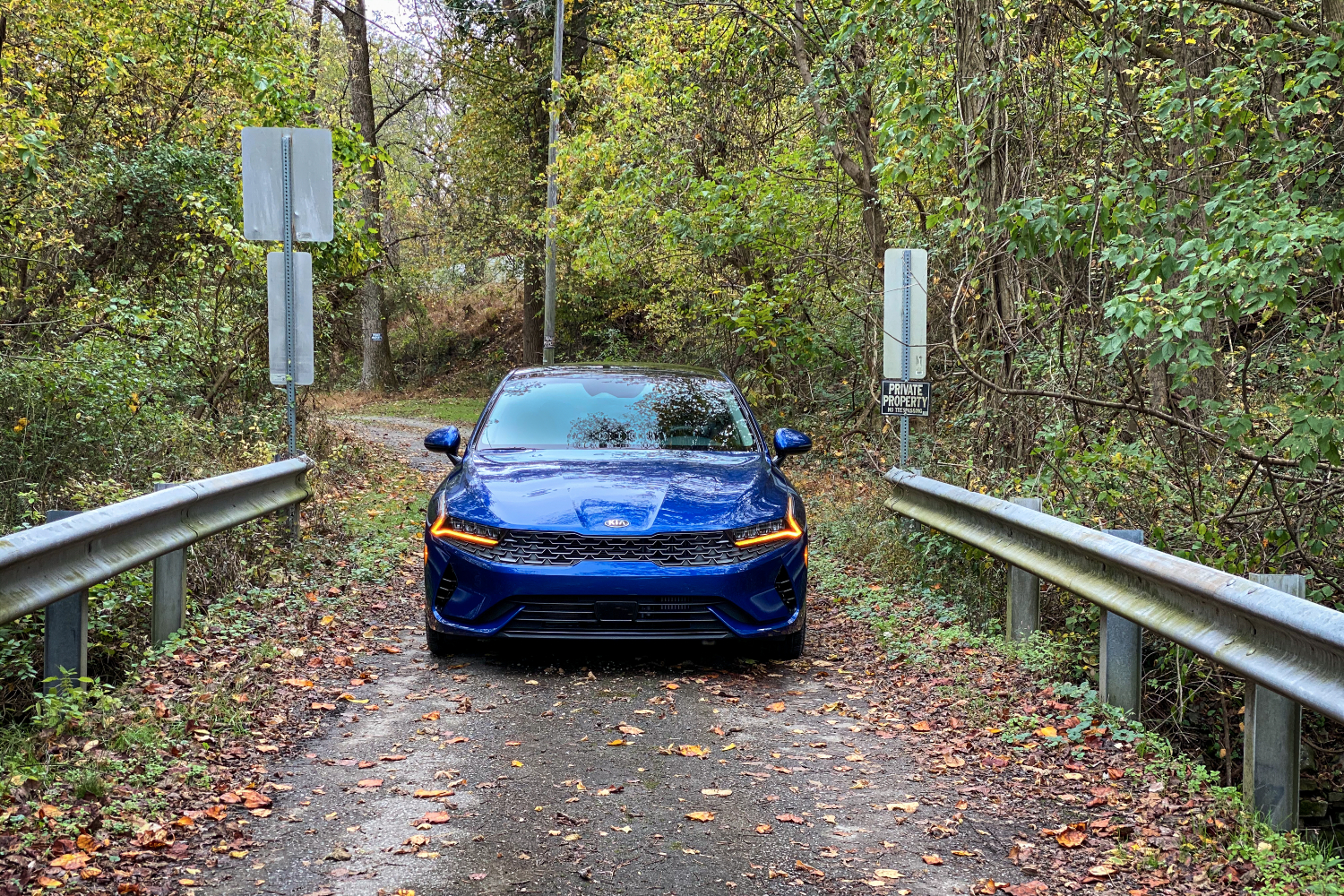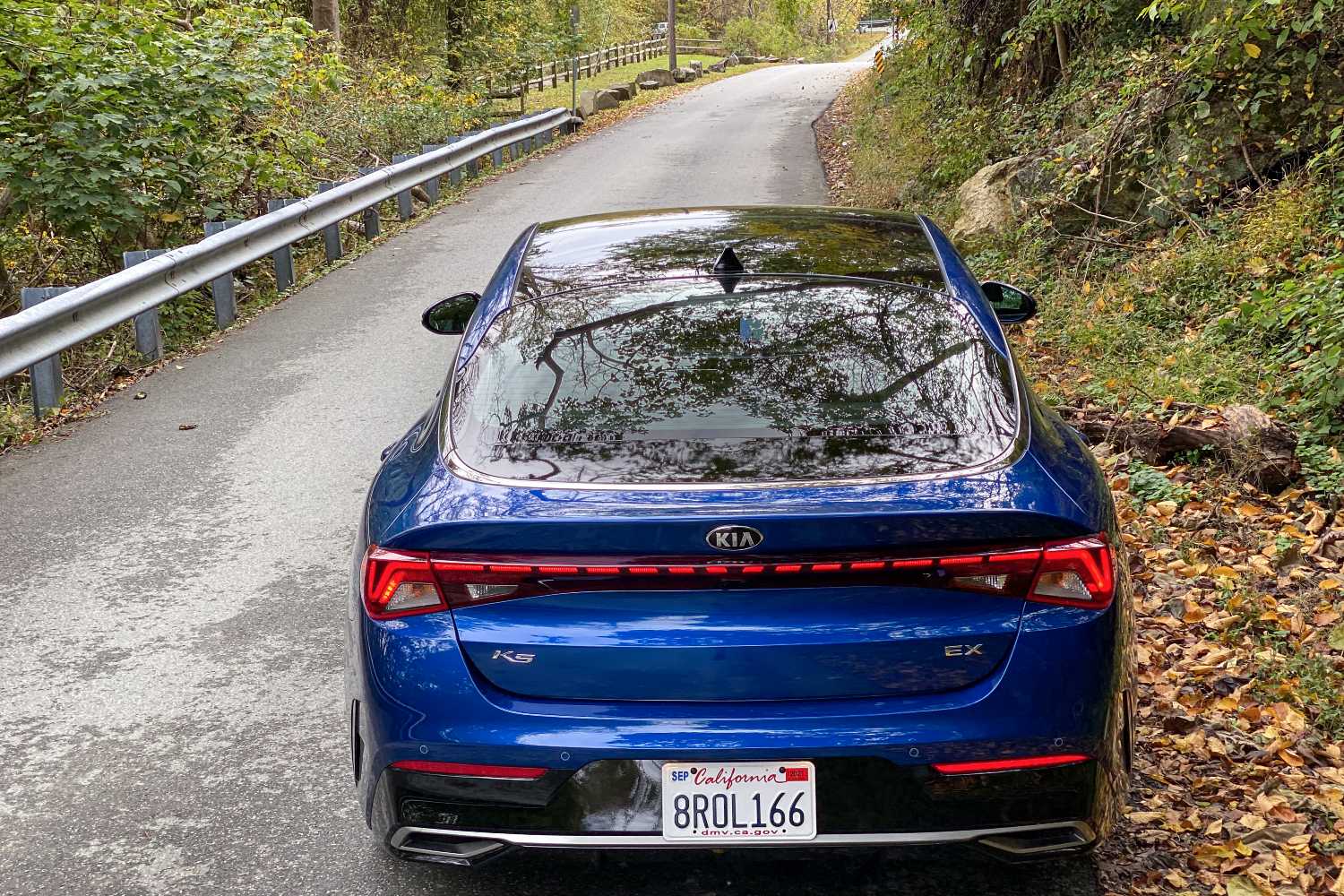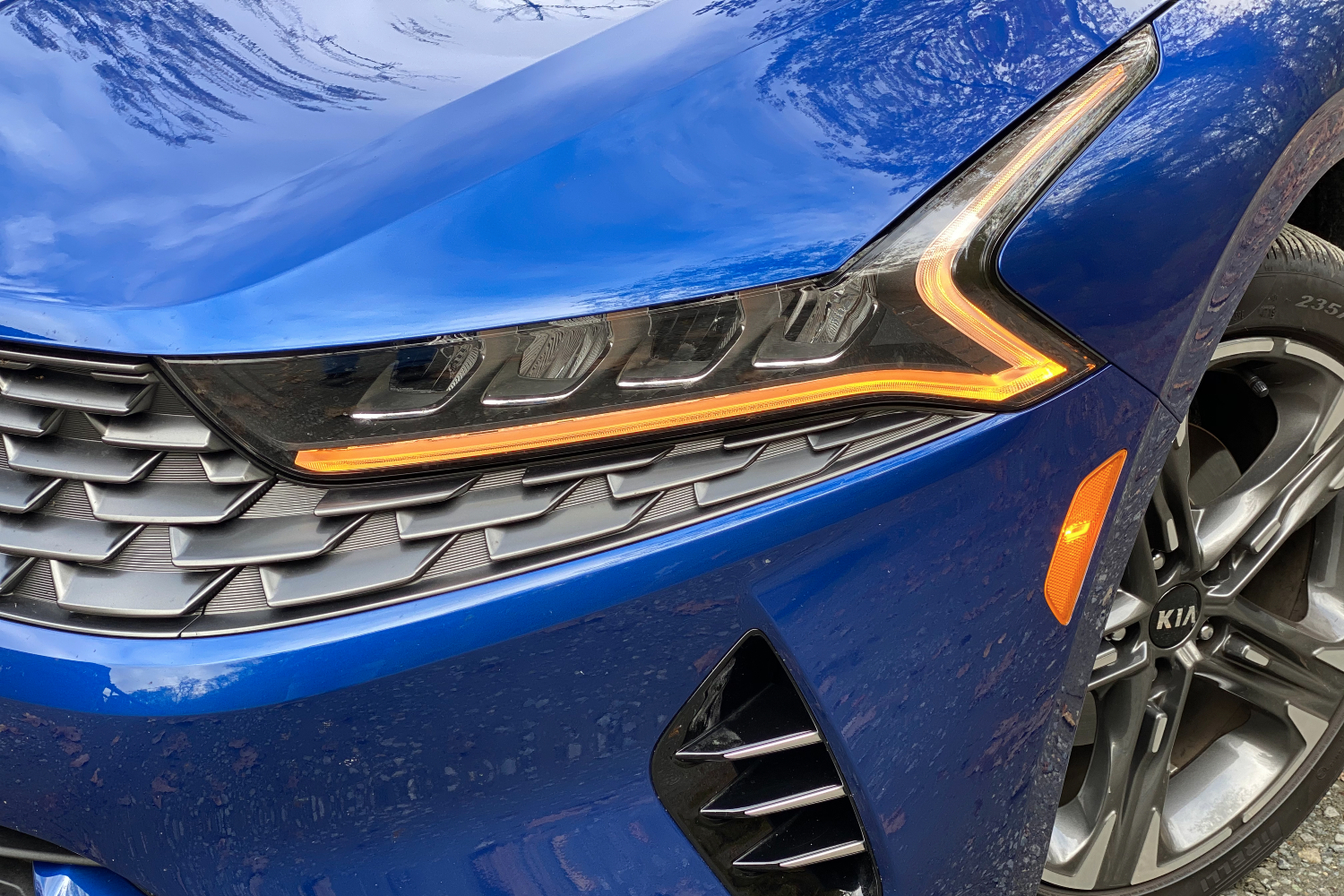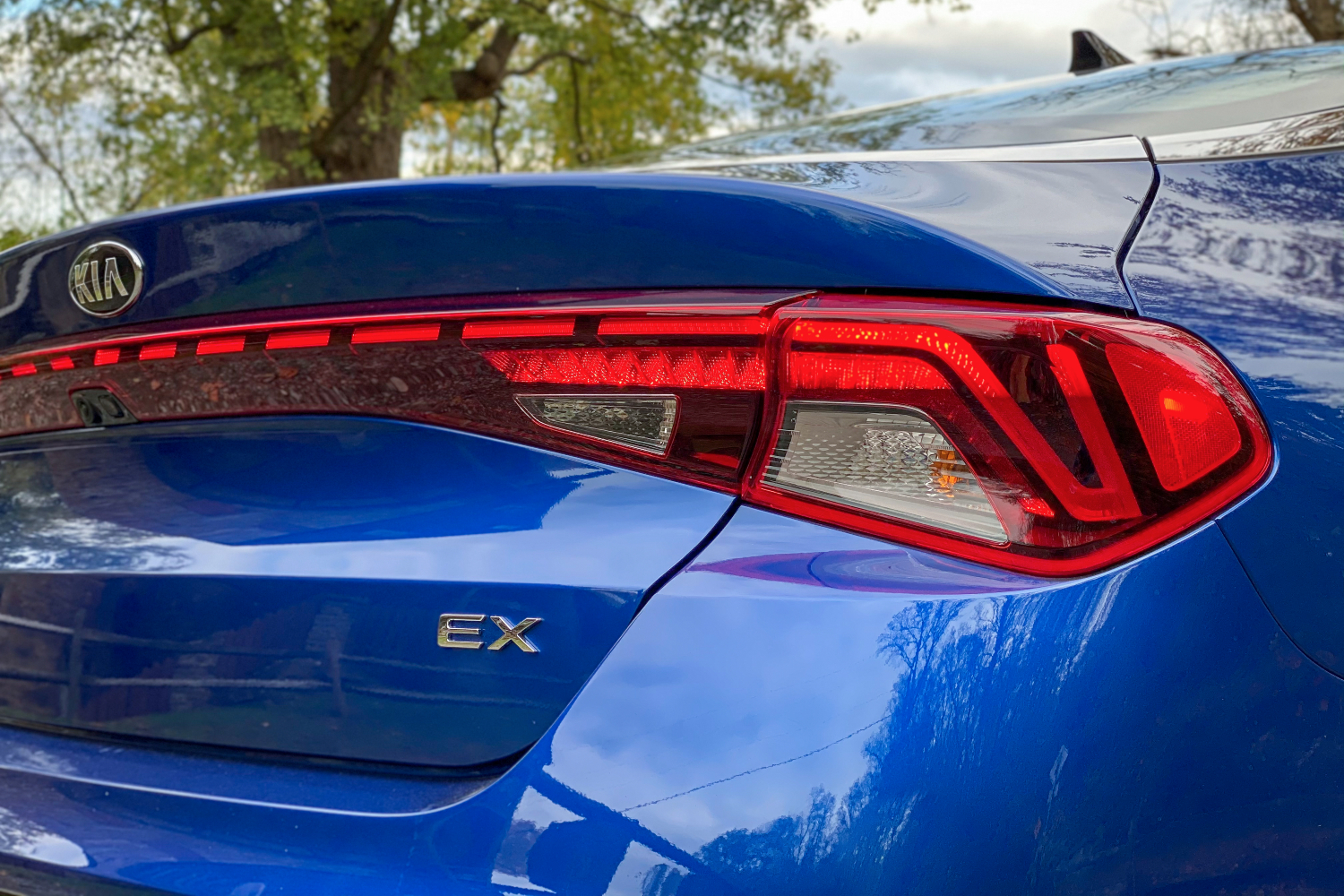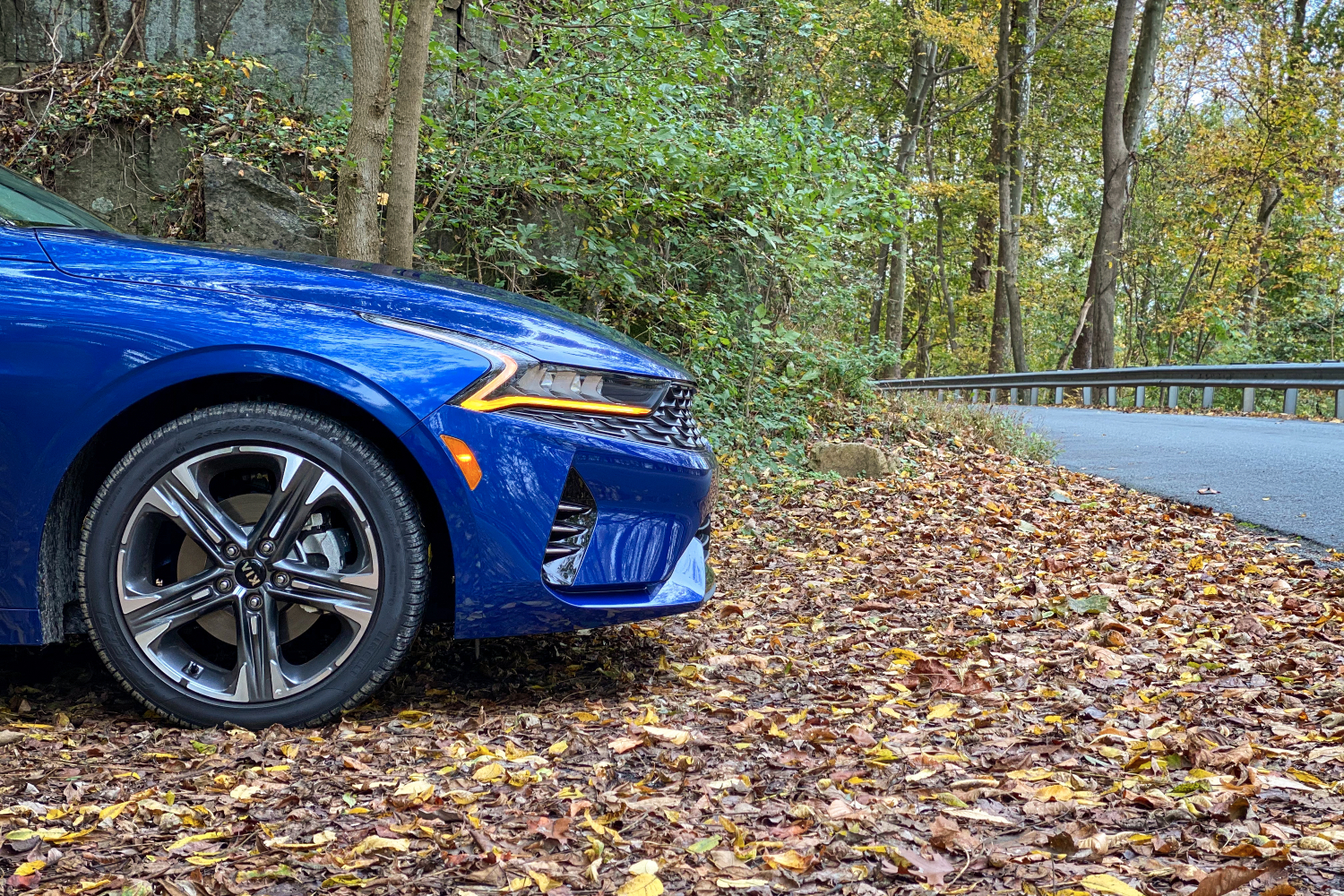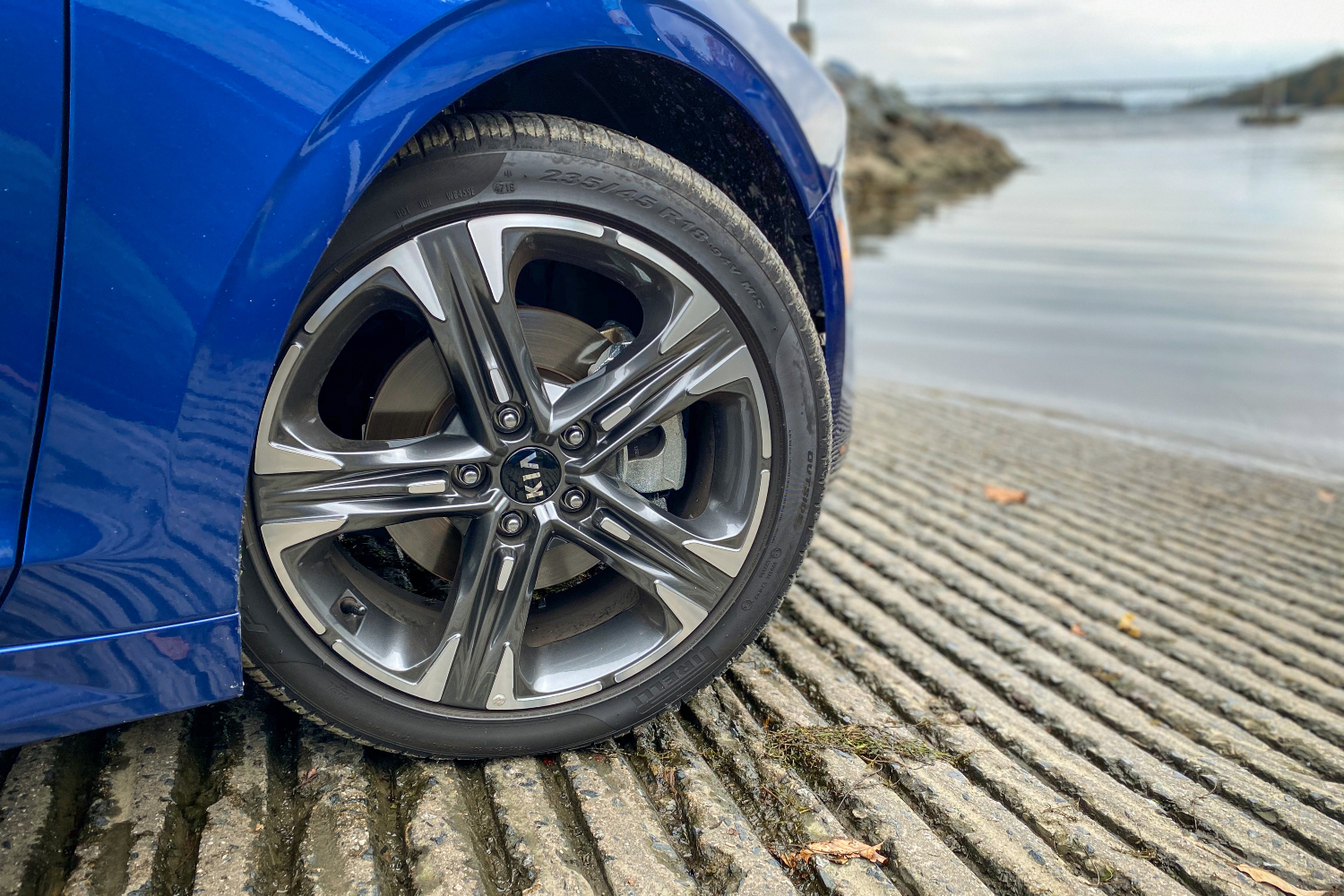If there was a “Best Up-and-Comer” award for the automotive industry, it would certainly go to Kia. We’ve already spoken incredibly highly of the amazing Telluride, enjoyed the funky Soul GT-Line for daring to stand out, and cheered the Niro EV on for attempting to take rivals in the red-hot electric-vehicle scene. Both the all-new Seltos and Sorteno look awesome, too. However, if you’ve caught that we haven’t raved about any of Kia’s sedans recently, you’re right.
Kia, clearly, hasn’t put as much effort into coming out with new sedans as it has for its SUVs. Why would it? Numbers don’t lie and the numbers just aren’t there for sedans anymore. While the Stinger is excellent, its other sedans don’t cause consumers to swoon in the same way as the automaker’s high-riding vehicles. For the few consumers out there that haven’t given up on midsize sedans, the all-new 2022 K5 will truly make you question whether Kia made it.
We’ve all seen those terrible Chevrolet commercials. You know the ones. Where they’ve gathered a bunch of people around a shiny, brightly painted Chevy and ask them what kind of car they think it is. My favorite is the one for the Chevrolet Malibu. With the badges removed, people appear to be flummoxed by what car it is. Some claim it looks like an Audi, one woman says it reminds her of a Lexus, other people say BMW. Where these people are getting these ideas from is a mystery, because no one, at least no normal person, looks at a Malibu and thinks it looks like it’s from a German luxury brand.
The thing about the new K5 is that it could actually fool people into thinking it’s from a different brand. I won’t go as far as to say BMW, Audi, or Lexus, but hey, others might. Either way, the K5 is one of the best sedans to ever wear a Kia badge and will make you forget all about the atrocity that was the Amanti.
As with many other highly successful vehicles from Kia, the K5 represents the South Korean automaker’s march toward being a more upscale brand. Upon first glance, it has worked. It’s odd: As more and more consumers have moved toward SUVs, automakers have taken the time to develop stunning designs for sedans.
The majority of shoppers get hooked onto a vehicle because of its design. In the case of the K5, it’s hard not to get attached after looking at it for a few seconds. Kia’s killing it in the front-end and headlight design and the way the headlights zig through the front fender and zag through the grille is gorgeous.
The interior is even more of a smashing hit. It’s no secret that Kia and Hyundai share a lot of components between their two vehicles. While the Hyundai adopts a classy, elegant design, the K5 is edgier and this is where Kia’s option really sets itself apart in the midsize segment. The wood trim, the tiered design of the dash, the fighter-jet styled gear selector, and switchgear for the heated and ventilated seats are just a few of the standout elements. You certainly won’t confuse material quality to match a Mercedes-Benz, but it’s worlds better than the old Optima.
Of course, the K5 being a midsize sedan, there’s a spacious set of rear seats and a sizeable trunk. The available Bose audio system bumps and the available 10.25-inch touchscreen is a crisp, clear, and gorgeous way to showcase information, though you’re trading wireless smartphone compatibility for the larger screen.
While it’s easy to get caught up in all that the K5 offers, there’s one crucial thing it doesn’t have that sets the tone for the vehicle. The K5 in its EX trim does not offer any paddle shifters. This is ingenious. Here’s the thing about the K5 – it may look sporty and have a turbocharged engine, but it’s not something consumers will buy just to go on a spirited jaunt to grab milk. So, it doesn’t need paddle shifters. Automakers have gone nuts with the whole paddle shifters thing, putting them on every vehicle imaginable without thinking about the car’s intended purpose. The K5 is smooth, relatively quiet, comfortable, and handles well, that’s all that really matters. No need to impinge on the more powerful and performance-oriented GT trim.
Then, there’s the vertically oriented wireless charging pad. On all of the vehicles I’ve ever tested, the wireless charging pad has always been horizontally oriented – you place your phone flat on the pad. In the K5, you slide your phone into the charging pad, so it’s sitting upright, leaving more space for other goodies. A small thing, but I love it.
My wife and I owned a 2012 Kia Optima Hybrid for roughly eight years. We loved the sedan, but over time, things did start to go awry. The steering wheel lost its color within the first five years and no amount of cleaning or moisturizing fixed it, the buttons on the steering wheel stopped working, some of the buttons on the center console started to stick, there was an odd rattle from the back, and the Kia badge on the outside began peeling. Nothing that stopped us from having fond memories of the sedan, but items that made us feel like Kia was still in its teething phase of manufacturing. That feeling doesn’t exist with the K5.
In this incredibly competitive segment, the K5 doesn’t have what it takes to dethrone the Honda Accord, outshine the Mazda6, or draw people away from the faithful Toyota Camry. But the K5 inches ever close to greatness. A tuck here, a nip there, slightly more refinement elsewhere, the K5 is three innings away from winning a World Series. If you told us that you purchased one just because of the way it looks, we’d understand.
Fair warning, it’s best to have some patience when you’re driving the K5. People are going to ask you whether the K5 really is a Kia a few times before it actually clicks. There’s an easy fix for that, though. Remove the badges and let them guess to their hearts’ content.
